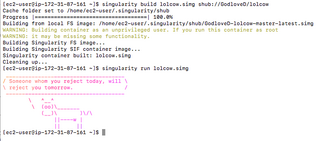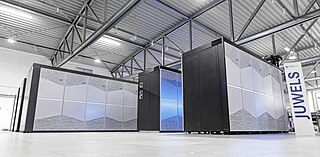
David Harold Bailey is a mathematician and computer scientist. He received his B.S. in mathematics from Brigham Young University in 1972 and his Ph.D. in mathematics from Stanford University in 1976. He worked for 14 years as a computer scientist at NASA Ames Research Center, and then from 1998 to 2013 as a Senior Scientist at the Lawrence Berkeley National Laboratory. He is now retired from the Berkeley Lab.

Jack Joseph Dongarra is an American computer scientist and mathematician. He is the American University Distinguished Professor of Computer Science in the Electrical Engineering and Computer Science Department at the University of Tennessee. He holds the position of a Distinguished Research Staff member in the Computer Science and Mathematics Division at Oak Ridge National Laboratory, Turing Fellowship in the School of Mathematics at the University of Manchester, and is an adjunct professor and teacher in the Computer Science Department at Rice University. He served as a faculty fellow at the Texas A&M University Institute for Advanced Study (2014–2018). Dongarra is the founding director of the Innovative Computing Laboratory at the University of Tennessee. He was the recipient of the Turing Award in 2021.

High-performance computing (HPC) uses supercomputers and computer clusters to solve advanced computation problems.

David A. Bader is a Distinguished Professor and Director of the Institute for Data Science at the New Jersey Institute of Technology. Previously, he served as the Chair of the Georgia Institute of Technology School of Computational Science & Engineering, where he was also a founding professor, and the executive director of High-Performance Computing at the Georgia Tech College of Computing. In 2007, he was named the first director of the Sony Toshiba IBM Center of Competence for the Cell Processor at Georgia Tech.

The National Energy Research Scientific Computing Center (NERSC), is a high-performance computing (supercomputer) National User Facility operated by Lawrence Berkeley National Laboratory for the United States Department of Energy Office of Science. As the mission computing center for the Office of Science, NERSC houses high performance computing and data systems used by 9,000 scientists at national laboratories and universities around the country. Research at NERSC is focused on fundamental and applied research in energy efficiency, storage, and generation; Earth systems science, and understanding of fundamental forces of nature and the universe. The largest research areas are in High Energy Physics, Materials Science, Chemical Sciences, Climate and Environmental Sciences, Nuclear Physics, and Fusion Energy research. NERSC's newest and largest supercomputer is Perlmutter, which debuted in 2021 ranked 5th on the TOP500 list of world's fastest supercomputers.
In computer science, partitioned global address space (PGAS) is a parallel programming model paradigm. PGAS is typified by communication operations involving a global memory address space abstraction that is logically partitioned, where a portion is local to each process, thread, or processing element. The novelty of PGAS is that the portions of the shared memory space may have an affinity for a particular process, thereby exploiting locality of reference in order to improve performance. A PGAS memory model is featured in various parallel programming languages and libraries, including: Coarray Fortran, Unified Parallel C, Split-C, Fortress, Chapel, X10, UPC++, Coarray C++, Global Arrays, DASH and SHMEM. The PGAS paradigm is now an integrated part of the Fortran language, as of Fortran 2008 which standardized coarrays.

John Leroy Gustafson is an American computer scientist and businessman, chiefly known for his work in high-performance computing (HPC) such as the invention of Gustafson's law, introducing the first commercial computer cluster, measuring with QUIPS, leading the reconstruction of the Atanasoff–Berry computer, inventing the unum number format and computation system, and several awards for computer speedup. Currently he is the Chief Technology Officer at Ceranovo, Inc. He was the Chief Graphics Product Architect and Senior Fellow at AMD from September 2012 until June 2013, and he previously held the positions of Architect of Intel Labs-SC, CEO of Massively Parallel Technologies, Inc. and CTO at ClearSpeed Technology. Gustafson holds applied mathematics degrees from the California Institute of Technology and Iowa State University.
The Sidney Fernbach Award established in 1992 by the IEEE Computer Society, in memory of Sidney Fernbach, one of the pioneers in the development and application of high performance computers for the solution of large computational problems as the Division Chief for the Computation Division at Lawrence Livermore Laboratory from the late 1950s through the 1970s. A certificate and $2,000 are awarded for outstanding contributions in the application of high performance computers using innovative approaches. The nomination deadline is 1 July each year.
The Ken Kennedy Award, established in 2009 by the Association for Computing Machinery and the IEEE Computer Society in memory of Ken Kennedy, is awarded annually and recognizes substantial contributions to programmability and productivity in computing and substantial community service or mentoring contributions. The award includes a $5,000 honorarium and the award recipient will be announced at the ACM - IEEE Supercomputing Conference.
Ignacio Martín Llorente is an entrepreneur, researcher and educator in the field of cloud and distributed computing. He is the director of OpenNebula, a visiting scholar at Harvard University and a full professor at Complutense University. Dr. Llorente is a IEEE Senior Member. He holds a Ph.D in Computer Science from UCM and an Executive MBA from IE Business School.
John B. Bell is an American mathematician and the Chief Scientist of the Computational Research Division at the Lawrence Berkeley National Laboratory. He has made contributions in the areas of finite difference methods, numerical methods for low Mach number flows, adaptive mesh refinement, interface tracking and parallel computing. He has also worked on the application of these numerical methods to problems from a broad range of fields, including combustion, shock physics, seismology, flow in porous media and astrophysics.

James Weldon Demmel Jr. is an American mathematician and computer scientist, the Dr. Richard Carl Dehmel Distinguished Professor of Mathematics and Computer Science at the University of California, Berkeley.
The LINPACK Benchmarks are a measure of a system's floating-point computing power. Introduced by Jack Dongarra, they measure how fast a computer solves a dense n by n system of linear equations Ax = b, which is a common task in engineering.

Katherine "Kathy" Anne Yelick, an American computer scientist, is the vice chancellor for research and the Robert S. Pepper Professor of Electrical Engineering and Computer Sciences at the University of California, Berkeley. She is also a faculty scientist at Lawrence Berkeley National Laboratory, where she was Associate Laboratory Director for Computing Sciences from 2010–2019.

ACM SIGHPC is the Association for Computing Machinery's Special Interest Group on High Performance Computing, an international community of students, faculty, researchers, and practitioners working on research and in professional practice related to supercomputing, high-end computers, and cluster computing. The organization co-sponsors international conferences related to high performance and scientific computing, including: SC, the International Conference for High Performance Computing, Networking, Storage and Analysis; the Platform for Advanced Scientific Computing (PASC) Conference; Practice and Experience in Advanced Research Computing (PEARC); and PPoPP, the Symposium on Principles and Practice of Parallel Programming.

Singularity is a free and open-source computer program that performs operating-system-level virtualization also known as containerization.
Michela Taufer is an Italian-American computer scientist and holds the Jack Dongarra Professorship in High Performance Computing within the Department of Electrical Engineering and Computer Science at the University of Tennessee, Knoxville. She is an ACM Distinguished Scientist and an IEEE Senior Member. In 2021, together with a team al Lawrence Livermore National Laboratory, she earned a R&D 100 Award for the Flux workload management software framework in the Software/Services category.

JUWELS is a supercomputer developed by Atos and hosted by the Jülich Supercomputing Centre (JSC) of the Forschungszentrum Jülich. It is capable of a theoretical peak of 70.980 petaflops and it serves as the replacement of the now out-of-operation JUQUEEN supercomputer. JUWELS Booster Module was ranked as the seventh fastest supercomputer in the world at its debut on the November 2020 TOP500 list. The JUWELS Booster Module is part of a modular system architecture and a second Xeon based JUWELS Cluster Module ranked separately as the 44th fastest supercomputer in the world on the November 2020 TOP500 list.

Torsten Hoefler is a Professor of Computer Science at ETH Zurich and the Chief Architect for Machine Learning at the Swiss National Supercomputing Centre. Previously, he led the Advanced Application and User Support team at the Blue Waters Directorate of the National Center for Supercomputing Applications, and held an adjunct professor position at the Computer Science Department at the University of Illinois at Urbana Champaign. His expertise lies in large-scale parallel computing and high-performance computing systems. He focuses on applications in large-scale artificial intelligence as well as climate sciences.
The Center for Supercomputing Research and Development (CSRD) at the University of Illinois (UIUC) was a research center funded from 1984 to 1993. It built the shared memory Cedar computer system, which included four hardware multiprocessor clusters, as well as parallel system and applications software. It was distinguished from the four earlier UIUC Illiac systems by starting with commercial shared memory subsystems that were based on an earlier paper published by the CSRD founders. Thus CSRD was able to avoid many of the hardware design issues that slowed the Illiac series work. Over its 9 years of major funding, plus follow-on work by many of its participants, CSRD pioneered many of the shared memory architectural and software technologies upon which all 21st century computation is based.












